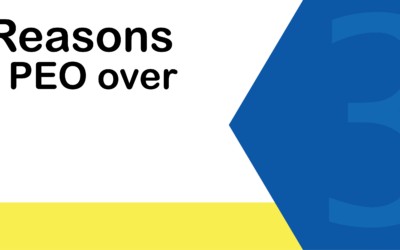Old School or New School: Handling Time Off
Not sure how much PTO to offer your employees? First let’s look at the types of time off offered by businesses.
Traditional leave plans separate time off into different categories, such as vacation time, sick time, and personal time. Employees are allotted a specific number of days or hours for each category. The time off, which is based on length of service, must be taken for the allotted purpose.
According to a report by WorldatWork, under a traditional plan:
- employees receive an average of 23 paid leave days for 1–2 years of service.
- Long-term employees earn an average of 37 paid leave days, after 20 or more years of service.
- These totals are inclusive of vacation, sick, and personal time.
A paid time off (PTO) system does not separate leave into categories. Instead, it uses a bank-type approach, in which a certain number of days are offered (based on length of service). Allowing employees to take for various types of absences. When someone request off using PTO some employers just consider it personal time, and don’t ask for details.
The WorldatWork report shows that:
- the average PTO given for 1–2 years of service is 17 days.
- For 20 or more years of service, employees receive an average of 27 PTO days.
What Are the Pros and Cons?
Traditional leave plans generally offer employees more total leave days than PTO systems. For this reason, some job candidates and employees may be more attracted to a traditional leave plan. As long as these employees don’t need to use more vacation, sick, or personal leave than allotted, they likely won’t have a reason to complain.
But, therein lies the problem: traditional leave plans lack flexibility. For instance, if employees exhaust all of their sick days but still need to take more time for health reasons, they might not be allowed to dip into their available vacation time to cover these absences.
PTO plans are inherently flexible because the available days can be taken for any reason. On the downside, given that employees receive fewer total leave days under a PTO system, they may come to work when sick, simply to save their leave days for vacation or other preferred types of absence.
How Are They Managed and Paid Out?
Administratively, because the leave being taken does not need to be traced, a PTO system is easier and cheaper to maintain than a traditional leave plan. Therefore, managers spend less time managing their employees’ time off given that they are dealing with only one pool of time, instead of three or four separate categories.
Legislatively, some states require that employers with a PTO system pay out all unused PTO when employees leave the company. With a traditional leave plan, only the unused vacation portion may need to be paid out.
Which Is More Popular?
According to WorldatWork, traditional leave plans remain the most prevalent type of leave program, but increasing numbers of employers are shifting toward PTO bank-type systems. Furthermore, a Bloomberg BNA report concludes that although employers still prefer traditional leave plans, a considerable number of surveyed organizations have opted for PTO systems. Ultimately, it’s up to employers to select the model that best suits their organization.
If you need help weighing the benefits of these two programs, contact us today at 772-466-0440. Want to learn more about our payroll benefits here.
Copyright 2024
Why Atlantic Payroll Partners
The biggest payroll companies probably won’t have time for your business. It’s that simple, you’ll be a number. At Atlantic Payroll Partners, you’ll be the opposite. We’ll know more than your name; we’ll know the names of your children and their birthday’s as well. We will know you.
We’ve been helping Florida business by managing their payroll and providing workers' compensation quotes for ten years. We help keep payroll cost affordable by provided transparent PEO payroll quotes that allow you to plan your budget accordingly. Like the big payroll companies, you can manage your payroll and payroll timekeeping with us, while reaping the benefits of PEO risk management.
Thinking about payroll outsourcing can be scary. Make sure you know what to expect from payroll outsourcing providers; to make the best decision for your business. In addition to offering payroll, and workers' comp quote we offer: Human Resource consultations, Accounting services, and benefits such as, 401ks and Healthcare plans.



